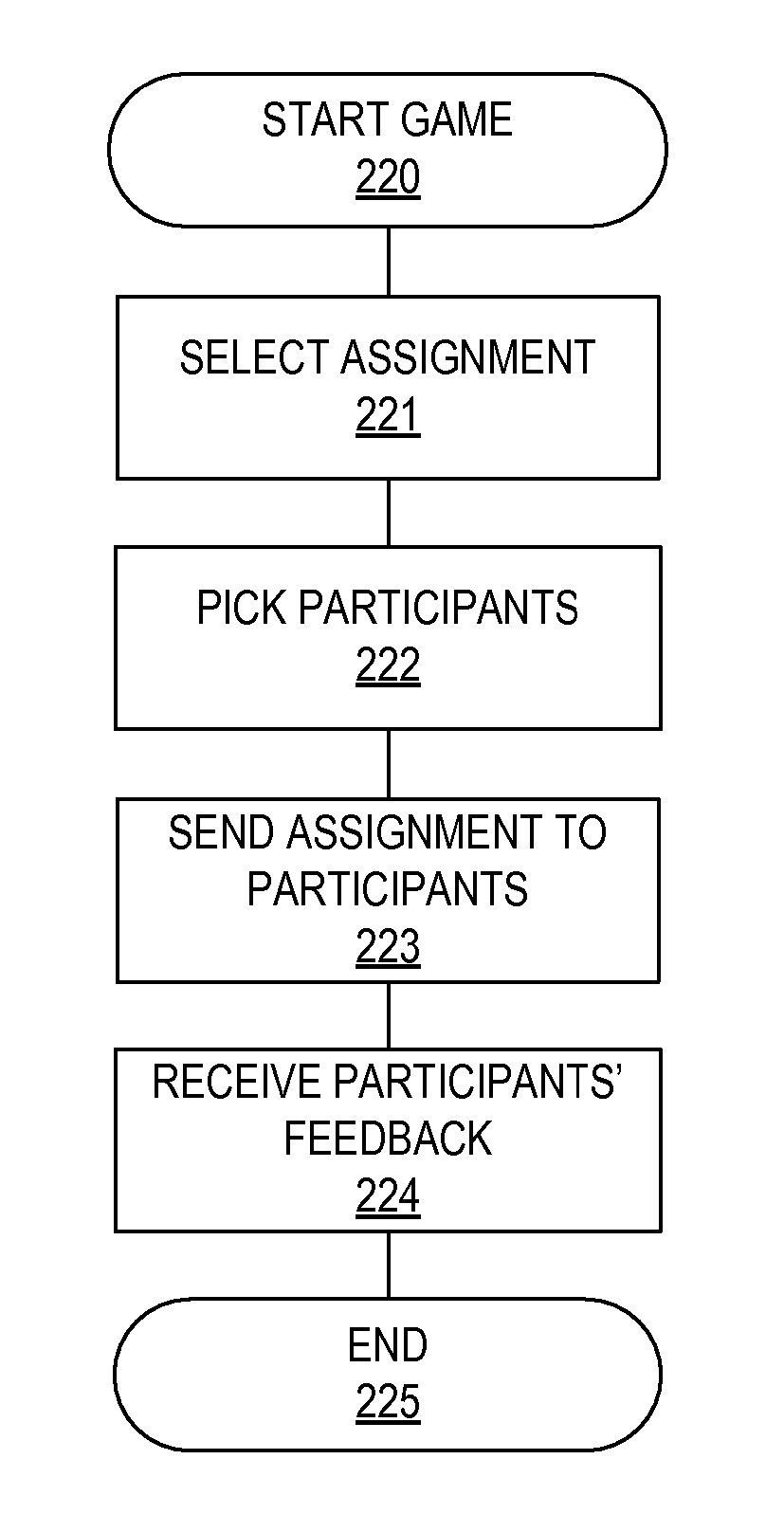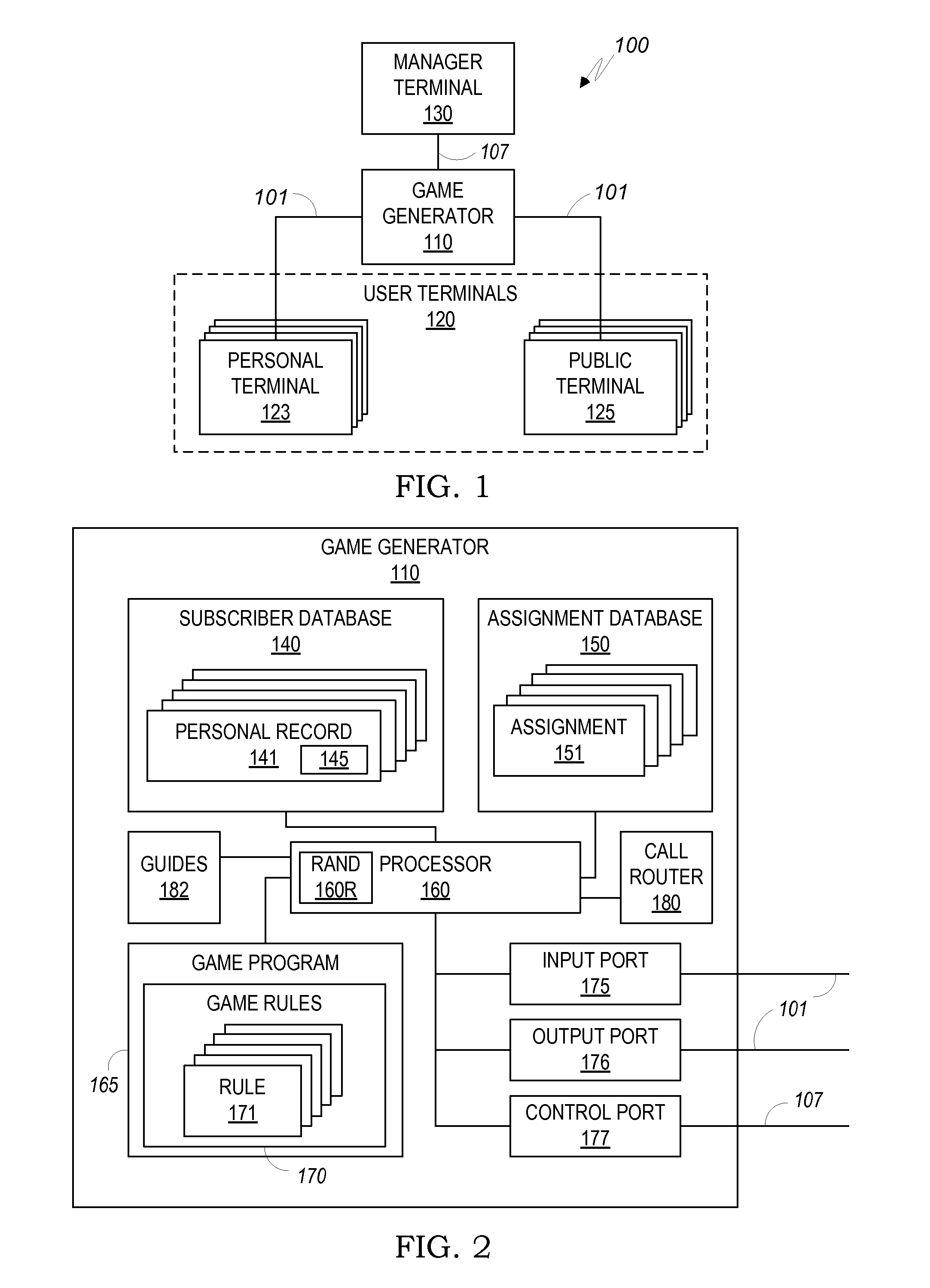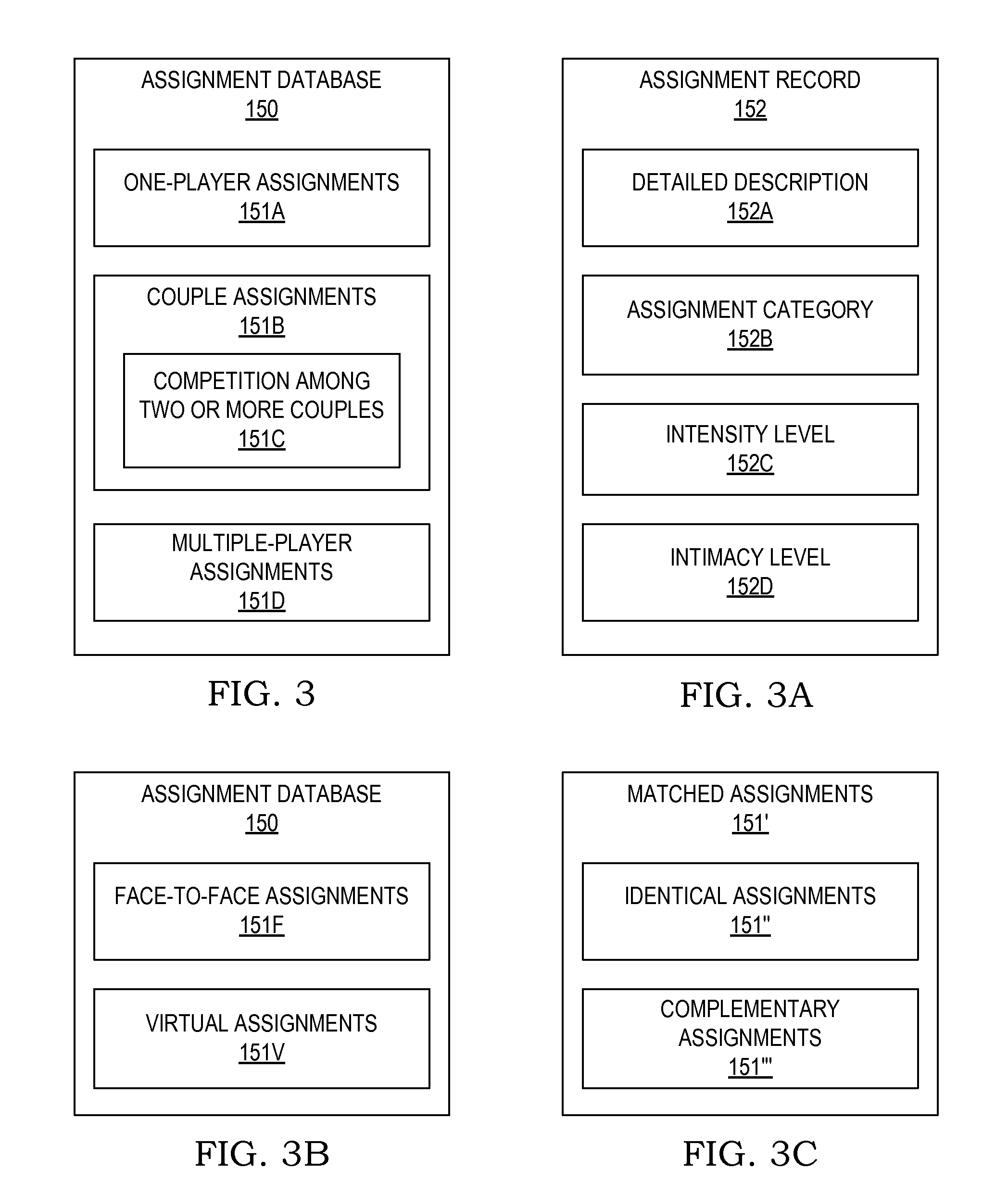Apparatus for managing social games
a social game and applicator technology, applied in the field of computer-aided social activities, can solve the problems of ignoring the majority of attendees by one another, affecting the quality of social games, so as to facilitate the picking and assigning operation
- Summary
- Abstract
- Description
- Claims
- Application Information
AI Technical Summary
Benefits of technology
Problems solved by technology
Method used
Image
Examples
Embodiment Construction
[0069] The principles and operation of a system for managing interpersonal activities according to the present invention may be understood with reference to the drawings and the accompanying description.
Overview
[0070] The system of the present invention provides a service to subscribers by arranging games in which one or more subscribers participate. The games are designed to exhibit the advantageous and attractive qualities of the subscribers, to arrange meetings and interaction with preferred prospective mates, to provide equality of opportunity between women and men, to induce a romantic and adventurous atmosphere that encourages a personal connection between matching participants, and to build up relationships.
[0071] A game includes a game assignment assigned to a subscriber, possibly in coordination with matched game assignments assigned to other subscribers. A non-limiting example of an assignment for a single subscriber is to sing on stage in front of other subscribers du...
PUM
 Login to View More
Login to View More Abstract
Description
Claims
Application Information
 Login to View More
Login to View More - R&D
- Intellectual Property
- Life Sciences
- Materials
- Tech Scout
- Unparalleled Data Quality
- Higher Quality Content
- 60% Fewer Hallucinations
Browse by: Latest US Patents, China's latest patents, Technical Efficacy Thesaurus, Application Domain, Technology Topic, Popular Technical Reports.
© 2025 PatSnap. All rights reserved.Legal|Privacy policy|Modern Slavery Act Transparency Statement|Sitemap|About US| Contact US: help@patsnap.com



